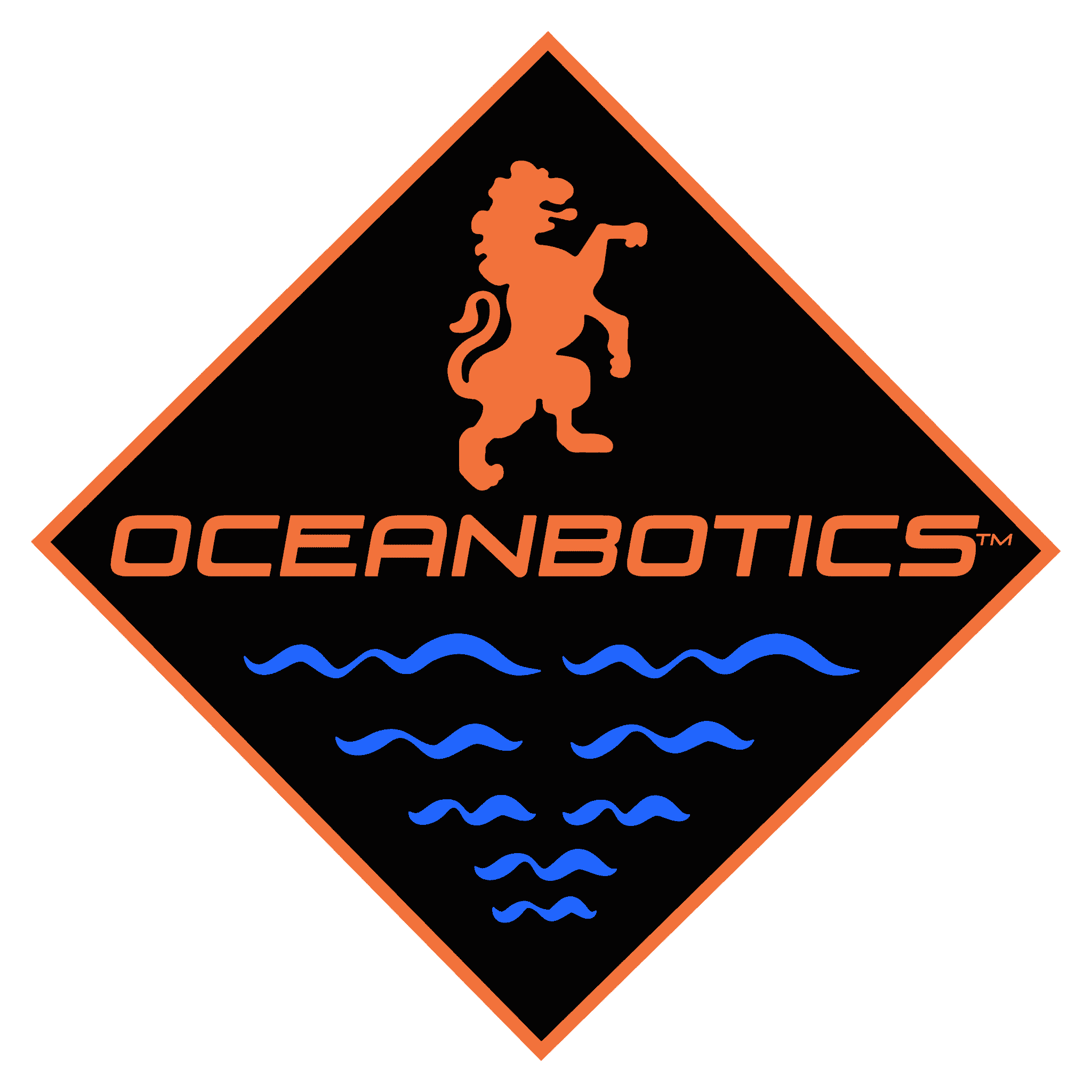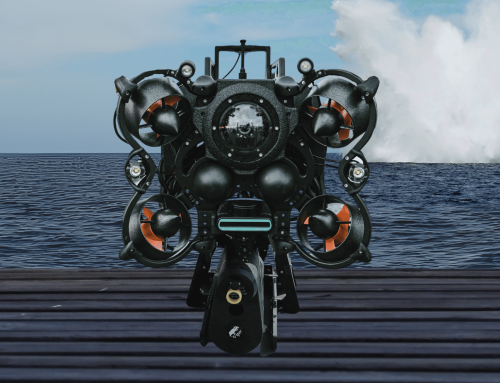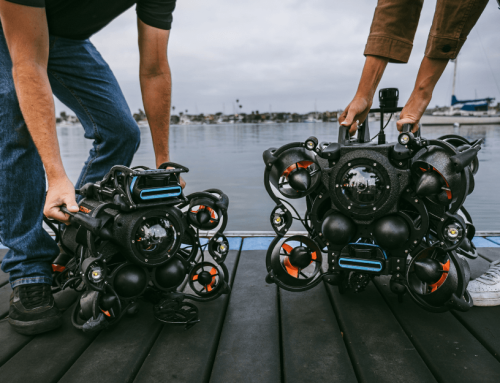What is an ROV? Answers to the
Top 8 Questions
Top 8 Questions
Introduction
An ROV, or “Remotely Operated Vehicle,” is an advanced underwater robotic vehicle designed to perform tasks beneath the water’s surface with precision and efficiency. Also called underwater ROVs, these vehicles are remotely controlled by an operator above water.
We researched the most commonly asked questions about ROVs and gathered insights from our experts to answer the top eight. Whether you’re looking to buy an ROV for professional use or want to learn how they’re transforming underwater operations, let’s explore their features and real-world impact.
8 Most Commonly Asked Questions about ROVs

1. How do ROVs work?
ROVs, or remotely operated vehicles, are advanced underwater robots designed to collect data and perform tasks beneath the water’s surface. They are powered by batteries or a surface generator and controlled remotely by an operator, or ROV pilot, above the water. The pilot uses a remote controller and a digital device, like a laptop or tablet, to steer the ROV and operate tools such as manipulator arms for specific underwater tasks.
2. What are the different types of ROVs?
ROVs come in various sizes and capabilities and are designed for specific tasks and applications. They are categorized into four primary classes, ranked from smallest to largest:
1. Hobbyist Class ROVs
- The smallest and most affordable ROVs.
- Primarily used by enthusiasts or entry-level pilots for recreational purposes.
2. Observation Class ROVs
- Larger and more durable than hobbyist models.
- Ideal for simple observational and navigational tasks.
3. Inspection Class ROVs
- Capable of advanced tasks like data collection, inspections, and maintenance.
- Commonly used in commercial and industrial settings for professional operations.
4. Light Work Class ROVs
- Commonly used in offshore oil and gas, marine construction, and deep-water research.
- Able to operate at significant depths.
5. Heavy Work Class ROVs
- The largest and most powerful ROVs.
- Designed for deep-water exploration, underwater construction, and complex operations.
- Can operate at depths of up to 6,000 meters.

3. Which industries are implementing ROV technology for critical operations?
ROVs are widely used across various industries due to their versatility and ability to operate in challenging underwater environments. Some of the most common applications include:
Law Enforcement & Search and Rescue
ROVs have become essential tools for law enforcement and search & rescue (SAR) teams in underwater search and recovery missions. Their quick deployment and ease of use make them invaluable for locating objects or missing persons efficiently. Equipped with live video and imaging sonar, ROVs give dive teams a clear view of underwater conditions, reducing search time and costs. More importantly, they enhance diver safety by minimizing unnecessary risks, allowing teams to focus on critical tasks with greater precision and efficiency.
Offshore Drilling (Oil & Gas)
Offshore technicians use ROVs to inspect underwater structures, assist with maintenance, and support drilling. Traditional pipeline inspections can be risky and time consuming, but ROVs let technicians work remotely, making the process faster and safer. These vehicles have robotic arms, such as 3-jaw and 2-jaw grabbers, for precise handling, greatly improving safety and efficiency.
Military Operations
Military and naval defense teams are increasingly using underwater robotic vehicles for surveillance, reconnaissance, and explosive ordnance disposal (EOD). These militray-grade remotely operated vehicles (ROVs) can be deployed quickly in high-pressure situations, such as locating underwater objects or neutralizing mines.
Commercial Diving & Underwater Surveying
A diver’s new best friend, ROVs help with inspections, surveys, and repairs in dangerous or hard-to-reach areas. With accessories like robotic arms, imaging sonar, and measurement tools, they provide endless possibilities for professionals to complete tasks faster and more cost-effectively.
Marine Research
The world’s largest marine research organizations, including NOAA, use remotely operated underwater vehicles (ROVs) to explore underwater ecosystems, track marine life, and conduct environmental assessments. Scientists can view live video footage from ROVs in real time, study the environment, and record videos for later analysis.
ROVs are also making their way into classrooms across the country, where teachers are introducing students to these advanced robotic tools and their role in modern science. Take NOAA, for example—at the Flower Garden Banks National Marine Sanctuary, researchers and their students use their SRV-8 ROV to collect data and study coral populations in the Gulf of Mexico.
Underwater Construction
As the blue economy and underwater construction grow worldwide, ROVs are becoming essential to the process. These vehicles make tasks like pipeline installation, repairs, and building offshore platforms more efficient and cost-effective.
Their wireless capabilities allow professionals in fields like civil engineering, coastal engineering, energy, and petroleum extraction to manage underwater projects remotely, offering more flexibility and control.
Environmental Monitoring
As human activity increasingly impacts the ocean, ROVs will play a crucial role in collecting data on water quality, marine pollution, and the effects of climate change on underwater ecosystems. A changing climate means a changing ocean, and adaptable tools like subsea robotic vehicles will become essential for monitoring these shifts and providing valuable insights to scientists and environmental planners.
With ROVs, researchers can set waypoints in the ocean and return to the exact locations each year to track changes in the environment and surrounding ecosystems, enabling more informed decisions for conservation and planning.
Film and Media Production
ROVs are also improving underwater filmmaking, allowing for deeper exploration and helping divers capture footage in tough environments. Their remote control lets divers assess the area before entering the water, ensuring safety and efficiency.
Discovery Channel’s Shark Week recently used ROVs to capture amazing footage of two large Mako sharks for their special, “Makozilla”!

10ft Mako shark captured by an ROV off the coast of Catalina for Discovery Channel’s “Shark Week”.
4. How Deep Can an ROV Go?
The depth range of an ROV varies based on its class and specific operational needs. Larger work-class ROVs can reach depths of up to 6,000 meters. However, many operations, such as search and recovery missions and pipeline inspections, typically occur between 50 and 300 meters.
At Oceanbotics, we offer inspection-class ROVs, commonly used by professionals for inspections and surveys, with a depth capability of up to 500 meters (1,640 feet).
5. What kinds of tasks can an ROV perform underwater?
ROV manufacturers are continually innovating, finding new ways to make these underwater vehicles indispensable across various industries. Some of the most common tasks performed by ROVs include:
Capturing Picture & Video Footage
- High-resolution cameras enable detailed underwater videography and photography for research, filmmaking, or inspections.
Search & Recovery (SAR)
- Used for locating and recovering lost objects, ranging from tools to large assets like sunken vessels or aircraft parts.
Pipeline Inspections
- ROVs perform precise visual and sensor-based inspections to ensure the safety and integrity of underwater pipelines.
Data Collection
- Gather important samples and measurements for scientific research, environmental monitoring, and water quality assessments.
Debris Removal
- Used for clearing underwater obstacles to ensure safe navigation and protect marine environments.
Underwater Construction & Surveying
- Mapping the seafloor or inspecting underwater structures with high accuracy.
Hull Cleaning for Cargo and Cruise Ships
- Maintaining ship efficiency by removing barnacles and other marine growth from hulls.
Mine Neutralization
- Neutralizaing unexploded ordances (UXOs) such as sea mines and improvised explosive devices (IEDs).
Monitoring Fishing Activities
- ROVs monitor fishing activities and ensure regulatory compliance, including enforcing lobster diving restrictions and overseeing fisheries management practices.
Port Surveillance
- Surveying cargo and cruise ships for illegal activities, such as drug smuggling and illegal dumping.
6. What’s the Difference Between an ROV and an AUV?
ROVs (Remotely Operated Vehicles) and AUVs (Autonomous Underwater Vehicles) are often confused, but they have different purposes and operate in distinct ways.
- ROVs are connected to a surface control system by a tether. A pilot controls them in real-time using a remote controller. The tether supplies power, communication, and precise maneuvering, making ROVs ideal for tasks that need close supervision, like inspections, repairs, or search and recovery missions.
- AUVs, on the other hand, are fully autonomous. After being programmed, they operate on their own without a pilot or tether. This allows AUVs to cover larger areas, making them ideal for tasks like mapping the seafloor or collecting data over long distances.
In summary, ROVs are best for precise, controlled tasks, while AUVs are designed for independent operations over wider areas. Both are essential for underwater missions, but each excels in different situations.

Remotely Operated Vehicles (ROVs) are connected to a durable tether and an ROV pilot controls them in real-time using a remote controller.
7. How Are ROVs Controlled and Piloted?
Contrary to popular belief, piloting an ROV is simpler than many people think, requiring minimal setup. The operation relies on three key components: the interface, the software, and the controller.
The Interface
ROVs are controlled through a data interface, like a laptop or tablet, connected to the ROV by a tether. This tether sends data back and forth, allowing the pilot to monitor and control the ROV in real-time. The interface is powered by specialized software, such as our custom closed-source ROV software, SubNav OS, which converts the ROV’s data into controls and visual feedback.
At Oceanbotics, we equip our professionals with sunlight-readable laptops and tablets, ensuring clear screen visibility even in bright outdoor conditions. This feature enhances productivity and safety for those working in direct sunlight.
The Software
Every ROV uses custom software designed for its specific capabilities. For example, advanced inspection ROVs like ours use SubNav OS, a closed-source software that acts as the ROV’s command center, enabling pilots to control key functions such as thrusters, lights, cameras, depth, and speed, while also supporting additional tools like sonars, manipulator arms, and navigation equipment. This intuitive software ensures easy control and smooth operation.
The Controller
The controller is the pilot’s main tool for maneuvering the ROV. While controllers vary by model, we prioritize ease of use in our ROVs. By using a standard gaming controller, we make navigation intuitive. Pilots can adjust lights, speed, and direction easily, making the experience more user-friendly compared to traditional controls.
These three components—interface, software, and controller—work together to provide smooth, efficient control of the ROV, making piloting straightforward whether you’re conducting inspections or exploring the depths.
8. What Accessories or Tools Can Be Attached to an ROV?
An ROV’s accessories depend on its class and intended use, but a wide range of add-ons can enhance its capabilities and efficiency. Here are some of the most common tools:
Imaging Sonar
- Delivers detailed underwater visuals, even in murky or low-visibility conditions, making it essential for search and rescue, inspections, and mapping.
Navigation Systems
- Provide precise positioning and route planning, especially in challenging underwater environments.
Manipulator Arms
- Enable interaction with objects, such as retrieving samples, cutting cables, or using tools.
Acoustic Tracking Systems
- Track the ROV’s location relative to a fixed point or moving target, ensuring accurate operations.
Doppler Velocity Log (DVL)
- Provide precise navigation and positioning, often with advanced features like high-accuracy velocity measurements and depth tracking for reliable underwater operations.
High-Definition Cameras
- Offer additional visual angles, often with advanced features like 4K resolution or low-light performance for thorough underwater observation.
These accessories enhance an ROV’s capabilities, enabling it to handle tasks such as search and rescue, pipeline inspections, marine research, and data collection. Equipping your ROV with the right tools ensures it’s prepared to meet the unique demands of your operations.

Conclusion
Remotely Operated Underwater Vehicles (ROVs) have changed the way we work and explore underwater. These robotic vehicles come in different types, from small observation ROVs to larger work-class ones, each designed for specific tasks. They can operate in shallow water or deep-sea environments, helping industries like offshore energy, search and rescue, marine research, and infrastructure inspection. Equipped with tools like cameras, robotic arms, and imaging sonar, ROVs can handle complex jobs, while trained pilots ensure smooth and accurate operations.
Looking for a reliable, easy-to-use ROV built for demanding underwater missions? Our ROVs offer versatility, efficiency, and trusted performance in the field. Reach out to learn how our technology can support your team’s success.








